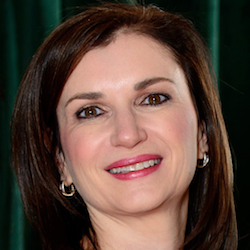
For many older adults, direct contact and an ongoing relationship with physicians is essential to their overall personal care and general well-being. People who believe that they have a strong relationship and ongoing communication with their medical professionals are more likely to be satisfied with their care, share pertinent information for accurate diagnosis of their problems, follow advice, adhere to the prescribed treatment plans and even make referrals to friends. In fact, along with providing quality care, quality communication is essential to maintaining high levels of patient or resident satisfaction.
Ongoing communication is not solely limited to in-person interactions between patients / residents and their physicians; it instead extends to the entire experience that goes into administering care, such as scheduling and rescheduling appointments, filling prescriptions, treatment follow-ups, providing education and frequent consultations when a person has concerns.
In the past, this kind of communication required that patients / residents or a member of their care team make time-consuming phone calls. Today, however, patients and residents increasingly are demanding to use text via their smartphones and tablets to communicate with their doctors and healthcare providers. In fact, 76% of patients of all ages believe that texts are more convenient than phone calls, which is understandable, as text messages have a 99% open rate, 90% of which are read within three minutes of receipt.
But it’s not just the digital-first generation that craves this kind of mobile interaction. Pew Research found that 46% of the 65+ age group own smartphones today.
Although convenient, communicating via native SMS text message is highly insecure and does not meet strict HIPAA standards; therefore, it is not a feasible method for doctor-patient communication. As an alternative, senior healthcare providers are adopting enterprise-grade, HIPAA-compliant, secure messaging applications that mimic SMS text messaging to increase patient engagement and overall satisfaction.
Build relationships between patients and care teams
One of the major hurdles when treating elderly people is that they often rely on an extended care team, including family members that serve as caretakers. Additionally, because 81% of adults aged more than 65 years have more than one chronic condition, it often is required that physicians interact with a variety of health professionals to provide quality care.
For example, an older adult may have a primary care doctor that is familiar with his or her health history but also be heavily dependent on specialists such as a cardiologist to control high blood pressure as well as a pulmonologist to treat emphysema. Although these members of the care team may not be working in the same place or practice at the same time, they need to perform their roles in a way that is complementary, rather than obstructive, to optimize care for the person.
With secure messaging, patients and physicians can chat and collaborate one-on-one or create group communications that involve the entire care team. An additional benefit is that senders have complete control of the communications, images and documents, which means recipients cannot copy, forward or share information outside of the care team, eliminating the chance of unintended propagation of sensitive health data. Ultimately, secure messaging ensures that older adults and their care teams feel engaged and securely connected, which leads to improved satisfaction.
Improve treatment and medication adherence
For many older adults (and people of all ages), absorbing and remembering all of the information discussed during an appointment with a physician can be difficult, as the older adult often focus primarily on the information about their diagnosis and forget the instructions given about treatment. A recent study found that half of patients fail to recall recommendations and treatments their physicians give them, and on average, patients only remember one to two-thirds of what physicians say during a visit.
With secure messaging, providers can distribute information to those they treat in a more accessible and digestible manner, leaving the patient feeling more in control and empowered about their care. To further ensure positive treatment outcomes, an advanced secure messaging platform can be used to consistently prompt older adults to adhere to medication and treatment programs using automated reminders and surveys with two-way communications.
Support healthy lifestyles
Along with the digital-first generation, older adults increasingly are looking to their phones and apps to improve their health, fitness and lifestyle.
The use of mobile technology has proven successful in addressing such things as weight loss, smoking cessation and diabetes self-management. In the same vein, healthcare providers can use secure messaging to help patients and residents address the health and wellness issues that are most important to them by sending private, yet helpful, information and reminders that improve the patient experience and instill trust in the practice.
Today’s older-adult patients and residents no longer are averse to using mobile technology to help manage their personal health, which presents providers with the opportunity to offer digital solutions that streamline care and boost overall engagement and satisfaction. Secure messaging offers the benefits of two-way dialogue between patients / residents, physicians and their care teams without sacrificing the security and privacy that the provider-patient relationship demands.


